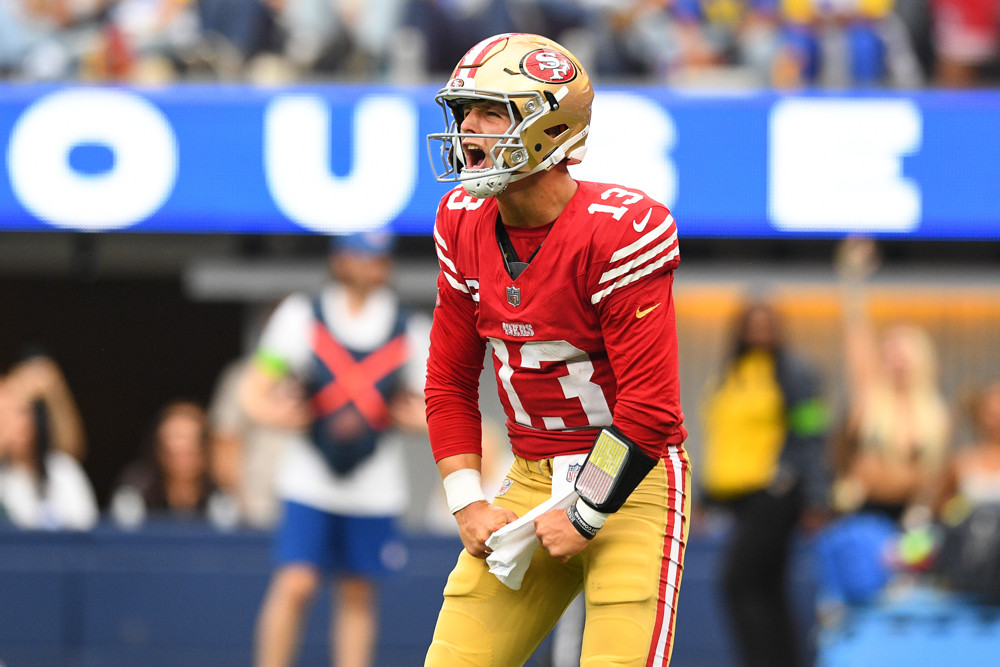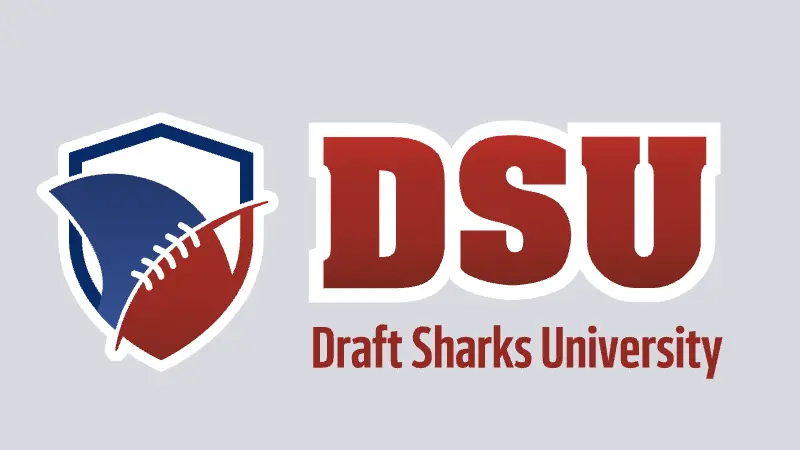What is a Guillotine League?
A Guillotine league is a unique and thrilling twist on traditional fantasy football. Your head is on the chopping block every week… If your team finishes with the fewest points in your league – in any given week – you face the guillotine!!
Let's break down the main rules of Guillotine leagues:
One Team is Eliminated Every Week
There is no head-to-head play in Guillotine. Instead, every week, the lowest-scoring team is eliminated from the league. This process continues until only one team remains. That lone team to avoid the guillotine is the champ!
Player Pool Recycles Every Week
When a team is eliminated, their players are released back into the free-agent pool. That creates a whole different vibe (frenzy!) in free agency, since top player talent becomes available every week.
Survival Strategy
Your focus here is simple – avoid being the lowest scorer each week. That means prioritizing consistent and reliable players over high-risk, high-reward options.
Win It All
Through your draft, and especially FAAB acquisitions, you need to end with the best team that can take the league down in the final few weeks.
Now that you have a grip on the basics of Guillotine leagues, let’s outline some core strategies.
Core Strategies for Guillotine Leagues
Check out these 8 quick-hitting strategies for Guillotine league. We’ll expound on these later, as well as introduce a couple more. For now, here’s your basic introduction:
Adopt a Guillotine Mindset
If you’re like most fantasy owners, you’re all jacked up on draft day to put together a team of studs, gonna-be studs, and hope-to-be studs. Competing in Guillotine requires a different mindset. You want the boring, the consistent, the tried-and-true point scorers. That’s the secret sauce in Guillotine.
Get Ready For Crazy FAAB
In traditional fantasy football leagues, free agency is important for filling gaps due to injuries or bye weeks. But the player pool rarely sees the introduction of top-tier talent after the draft. That's common every week in a Guillotine league. That means understanding when to be aggressive in your free agent bidding vs. when to wait for the following weeks.
Avoid Players with Extra Risk Factors
When building your guillotine league roster, it's crucial to minimize risk. Avoid selecting players who come with additional uncertainties. These risk factors include:
- Injury Prone Players. Steer clear of players who have a lengthy history of injuries or are coming off a significant injury. Their unpredictability can be a killer.
- Players on New Teams. Transitioning to a new team can often lead to a slower start or less predictable usage. Again, stay away from this unnecessary risk.
- Rookies. While rookies can be exciting, they often have an adjustment period to the NFL. That can lead to inconsistent performances, especially early in the season.
Don't Stack Teammates
In Guillotine leagues, the goal is to avoid having the lowest score in any given week. Stacking teammates (having multiple players from the same NFL team) can backfire big time if that team has a bad offensive week. So diversifying your lineup across different teams can help mitigate weekly risk.
Pursue High-Level, Consistent QBs
A reliable, high-scoring QB can be the backbone of your Guillotine team. Opt for QBs known for their consistency and ability to score high points regularly. This stability can be a key factor in surviving week-to-week.
Handcuffing Your Own RBs Is More Important
In a Guillotine league, having a backup for your top RBs is more crucial than in other formats. If your early-round RB goes down, having his direct backup (handcuff) can provide an immediate performance replacement. That’s going to be more valuable than a high-upside reserve who might not see the field. This strategy helps maintain your team's scoring potential without significant drops.
Consider Early-Season Schedules (But Don't Overrate Them)
Yeah, it’s worthwhile to look at early-season schedules as you draft. But don't put too much emphasis on this. Preseason strength-of-schedule analysis is speculative at best. Team dynamics change rapidly in the NFL. Focus more on the overall talent and consistency of players rather than their initial matchups.
Target Players With Late-Season Byes
Players with later bye weeks can give you a sneaky edge. That’s because early bye weeks are more challenging in Guillotine formats. You want a larger pool of available players early in the year – and then deal with bye weeks after you’ve had the chance to bolster your roster through free agency.
Target Players With High Floors
We’ve already mentioned this strategy – but let’s give it more attention. Focusing on consistent point scorers will give you a strategic advantage in Guillotine leagues.
QBs on Potent Offenses
QBs who lead potent offenses and have a high number of pass attempts per game are generally consistent fantasy performers. Yes, QBs are generally not high draft picks in most leagues. But the weekly reliability of high-end QBs makes them more valuable in guillotine.
Some QB stats that create a high floor:
- Completion Rate > 65%
- Pass Yard Per Game > 250
- TD to INT Ratio > 2:1
- QB Rating > 90
- Adjusted Yards Per Attempt > 7.5
- Rush Yards Per Game > 20
Here are several QBs that hit some of these stats in 2024 and can fall to you in the draft:
- Baker Mayfield
- Brock Purdy
- Jared Goff

Brock Purdy's combination of efficient passing and sneaky rushing makes him a nice target in guillotine drafts.
High-Volume RBs
Search for RBs who are given a lot of opportunities (carries + targets). Volume = Consistent fantasy production at RB.
Some RB stats that create a high floor:
- Carries Per Game > 15
- Yards Per Carry > 4.5
- Targets Per Game > 3.5
- Rush Attempts Inside the 5-Yard Line > 10
Consider these RBs who fulfilled some of these criteria last season for your target list in Guillotine drafts:
- Alvin Kamara
- Joe Mixon
- James Conner
High-Target WRs
WRs who are the primary option in their team's passing attack and see a large volume of targets tend to have less week-to-week variance in their fantasy output.
Here are some WR-specific stats and benchmarks to look at:
- Receptions Per Game > 5
- Yards Per Game > 60
- Catch Rate > 60%
- Target Share > 20%
- Red Zone Targets > 15
Check out these WRs who hit some of these benchmarks last year:
- Ladd McConkey
- Jaxon Smith-Njigba
- Courtland Sutton
- Jakobi Meyers
Heavily Used Receiving TEs
Top-tier TEs typically show consistency. Given the scarcity of elite talent at TE, those who are heavily targeted can provide a steady stream of points.
Some statistics to help you spot a high usage rate at TE:
- Targets Per Game > 5.5
- Routes Run Per Game > 30
- Yards Per Game > 40
- Red Zone Targets > 10
Look to grab one of these TEs:
- David Njoku
- Evan Engram
- Jake Ferguson
Key Insights: Aim for players who are set up for consistent production via volume. Sift through the vital stats at each position, both pre-season and in-season.
How to Execute This Strategy: Use sites that specialize in statistical analysis (Draft Sharks, Pro Football Focus, Pro Football Reference) to help you filter through different key metrics. Consider creating a list of players, for each position, that meet or exceed the benchmarks listed above. And make sure to check out our Guillotine League Rankings.
Be Extra Cautious About Injuries and Other Risk Factors
While some players are inherently consistent, their fantasy point output can get derailed by injuries. Banking on players who are often on the injury report is risky in fantasy football… but it’s lethal in Guillotine. Here’s how to lower that risk.
Research Injury History
Examine the player's injury history over recent seasons to identify any patterns of recurring injuries or prolonged absences.
Here are players with a hefty amount of career injuries:
- QB: Matt Stafford (23), Tua Tagovailoa (17), Aaron Rodgers (16), Joe Burrow (11)
- RB: James Conner (16), Aaron Jones (15), Austin Ekeler (13), Saquon Barkley (11)
- WR: Deebo Samuel (19), Tee Higgins (14), Mike Evans (13), DeVonta Smith (10)
- TE: George Kittle (17), Zach Ertz (15), Dallas Goedert (10)

George Kittle's lengthy injury history makes him a risky pick in guillotine leagues.
Monitor Offseason Recovery
Keep a close eye on offseason news about injuries, surgeries, and recovery timelines. Look for clues about how these might impact a player’s production so that you can figure out who's set to shine and who might be hobbling off the field.
Track Preseason Performances
Tune into those preseason games. Keep an eye on training camp chatter to catch any hints of nagging injuries that might impact production and consistency once the regular season kicks off.
Key Insights: Roll up your sleeves and dive deep into players' injury histories. Check out how long they've been in the league… their past scrapes and bruises… and keep an eye on how/if they're bouncing back.
How to Execute This Strategy: Consider vetting your potential picks by using the Draft Sharks Injury Predictor tool. You’ll get detailed injury risk profiles – based on our proprietary algorithm. It saves you hours of research in identifying guys too risky to have on your Guillotine team.
Bonus Tip: Don’t Chase Players Off Age Cliff
Contrary to popular belief, an older player is not necessarily more prone to injury.
(In fact, he might even be less so because he has proved his durability and perfected his maintenance routine over the years.)
But our research on aging curves has signaled some red-flag ages when production drops off – especially at RB and WR. So beware as you draft …
Age 29 is Rough for RBs
Historically, successful RBs have seen a large production dip in their age-29 seasons: from 80+% of their peak production the year before to about 70%.
Christian McCaffrey turned 29 in June, adding risk to his guillotine profile.
Other prominent RBs in the age danger zone include:
- Derrick Henry
- Joe Mixon
- James Conner
- Aaron Jones
We’re not saying they’ll all crash in 2025. But be cautious about drafting them in your Guillotine league.
WRs Don’t Like Turning 32
Age 32 (and beyond) has been similarly challenging for productive wideouts. The precise fall-off has differed by WR archetype, but the range of ages 32-34 has often delivered steep declines.
Prominent wideouts in that range this year include:
- Davante Adams
- Mike Evans
- Cooper Kupp
- Stefon Diggs
These guys come with elevated risk in your Guillotine league.
Create a Plan to Master Your Free Agent Acquisition Budget (FAAB)
Pace yourself when it comes to spending free agent money. You need to apply strategic planning and foresight when budgeting your FAAB. Here are some ways to become a free agency expert.
Conserve Your Resources Early
Start the season by conservatively managing your FAAB, saving your financial firepower for later in the season when more impactful players become available. (This seems counterintuitive for a Guillotine strategy, but you want the ability to grab some marquee players in October and November.)
Allocate Percentages Wisely
Reserve 65-75% of your budget for acquiring high-level players who can anchor your roster. The remaining 25-35% of your budget should be reserved for acquiring lower-level players who provide depth and flexibility to your roster.
Track Competitors' Budgets
Stay informed about your opponents' FAAB to strategize your bids effectively, especially in competitive bidding scenarios.
Be Aggressive in the Endgame
If you're in a strong position late in the season, shift to a more aggressive bidding strategy to secure players who can clinch you a Guillotine league championship.
Key Insights: Master your FAAB by saving early and spending late, allocating the majority for impact players that can offer consistent production, and observing rivals' spending to refine your approach.
How to Execute This Strategy: Designate 65-75% of your FAAB for key players who will be the cornerstone of your team, while reserving 25-35% for adding depth. Monitor your rivals' FAAB spending habits by regularly checking the league's transaction history or FAAB report. Use that insight to adapt your bidding tactics effectively.
Use Technology to Gain a Competitive Edge
Yes, you’re going to need some tools and technology to implement your Guillotine League strategy. Here’s what we think makes sense.
Live Draft Sync & Draft War Room
This tool will live-draft sync to your Guillotine league. And the Draft War Room uses an algorithm to recommend players based on your league rules and positional scarcity. So you get player recommendations in real time during your draft.
Player Floor and Ceiling Projections
The Draft War Room shows you the players with the highest floor projections. You want consistency over potential. Tried and true veterans over rookie prospects and younger talent. You’ll be able to see which players fit those benchmarks at just a glance.
Injury Risk Tool
You need a tool that can quantify the injury risk of every player. Based on a scientific algorithm and accurate injury history. This will be crucial to winning your Guillotine league.
Free Agent Finder
Since there will be an influx of free-agent talent every week in your Guillotine league, you’ll need a tool that finds the most valuable players for your specific team needs by automatically syncing to your league.
Frequently Asked Questions About Guillotine Leagues
What is Guillotine league strategy?
Guillotine league strategy is based on building a team that won’t be eliminated for having the lowest score in your league in any given week. The first rule to this strategy is simple: Draft a team of consistent point scorers, as opposed to potential breakout players with bigger risk.
How do you use FAAB in Guillotine league?
Using FAAB in Guillotine leagues is no different than any other fantasy league that uses FAAB and blind bidding. But Guillotine leagues require more strategic thought since the team that is eliminated every week has their players thrown back into the free-agent pool.
How much to bid in Guillotine leagues?
How much you spend in guillotine league free-agent bidding depends on a few factors. Among them – what are your team needs; what talent is available in any given week; and how much money do you want to save for later in the season?
Who to draft in Guillotine league?
The best players to draft in Guillotine leagues are consistent point scorers. As a position, that means you typically want a top-tier QB. A player like Bills QB Josh Allen has been a Guillotine league stud the past few seasons. High-volume RBs and big target earners at WR and TE also gain value in Guillotine leagues.







